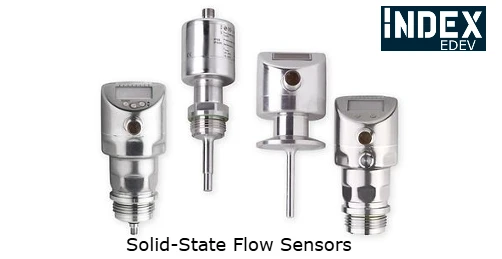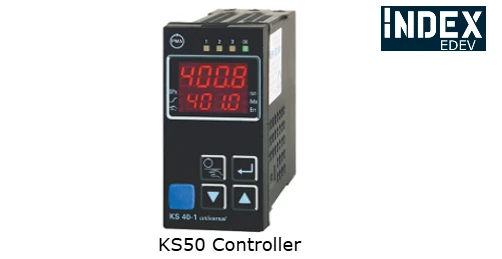Exploring Solid-State Flow Sensors: The Future of Accurate and Reliable Fluid Measurement

Overview
As technology advances, industries demand more precise and dependable measurement tools. Traditional mechanical flow sensors, though effective, have limitations such as wear and tear, which can impact their lifespan and accuracy. Enter solid-state flow sensors—innovative devices that eliminate moving parts, resulting in enhanced durability, reduced maintenance, and improved reliability. These sensors leverage advanced materials and electronics to measure fluid flow with precision and consistency, making them an increasingly popular choice in a wide range of industries, from automotive to environmental monitoring.
What Are Solid-State Flow Sensors?
Solid-state flow sensors measure the rate of fluid or gas flow without relying on moving parts. Instead, they use semiconductor technology and principles of thermodynamics, magnetics, or ultrasonics to detect the presence and speed of flow. Because of this design, they are less prone to issues caused by physical wear and environmental factors, making them suitable for long-term use in challenging conditions.
How Solid-State Flow Sensors Work
There are several types of solid-state flow sensors, each operating on unique physical principles. Here are some of the most common types:
- Thermal Flow Sensors:
These sensors use thermal conductivity principles to measure flow. In a typical setup, a heating element is placed along the flow path, and temperature sensors are positioned both upstream and downstream. As fluid flows past the heating element, it absorbs heat, creating a temperature difference that the sensors detect. This temperature gradient correlates with the flow rate, allowing for precise measurement. - Ultrasonic Flow Sensors:
Ultrasonic flow sensors use sound waves to measure the flow of a fluid or gas. These sensors work by transmitting ultrasonic waves through the medium and measuring the time it takes for these waves to travel from one transducer to another. The difference in travel times, caused by the movement of the fluid, is used to calculate the flow rate accurately. - Electromagnetic Flow Sensors:
In electromagnetic flow sensors, a magnetic field is applied across the flow path. As conductive fluid passes through the field, it induces a voltage proportional to its velocity. This voltage is measured by electrodes in the sensor, and the resulting data provides an accurate flow rate reading. These sensors are particularly useful for conductive fluids like water or certain chemicals. - Optical Flow Sensors:
Optical sensors use light beams to detect particles within the fluid and measure their velocity. By tracking how light scatters or shifts as it passes through the flow, these sensors can determine the flow rate. They are often used in applications requiring high sensitivity, such as detecting microfluidic flows in biomedical or chemical research.
Advantages of Solid-State Flow Sensors
Solid-state flow sensors have several benefits over traditional mechanical counterparts, making them ideal for various applications:
- Durability: With no moving parts, solid-state flow sensors are less susceptible to wear, leading to a longer operational life and lower maintenance costs.
- High Accuracy: These sensors are known for their high accuracy in measuring flow rates, even in challenging environments or with low-flow conditions.
- Compact and Lightweight: Solid-state sensors are typically more compact, which allows them to fit into smaller devices or systems where space is limited.
- Fast Response Times: The sensors provide near-instantaneous readings, making them suitable for applications requiring quick feedback.
- Lower Power Consumption: Due to their efficient design, these sensors consume less power, which is beneficial for battery-powered or remote applications.
Applications of Solid-State Flow Sensors
Solid-state flow sensors have a diverse range of applications across various industries due to their reliability and precision:
- Automotive Industry:
Solid-state flow sensors are used in automotive applications to monitor and control fuel injection, coolant flow, and exhaust emissions. They help improve fuel efficiency and reduce emissions by providing precise flow measurements under varying operating conditions. - Medical Devices and Healthcare:
In medical equipment like ventilators and respiratory monitoring systems, solid-state flow sensors ensure accurate gas flow measurements. These sensors are also used in intravenous (IV) fluid delivery systems to monitor flow rates, enhancing patient safety. - Industrial Automation and Process Control:
Industrial sectors, such as chemical and petrochemical processing, rely on accurate fluid flow monitoring for quality control and safety. Solid-state sensors are ideal here due to their reliability, reduced maintenance needs, and compatibility with harsh conditions. - HVAC Systems and Environmental Monitoring:
Heating, ventilation, and air conditioning (HVAC) systems use solid-state flow sensors to manage airflow and refrigerant flow, optimizing energy efficiency and ensuring indoor air quality. Environmental monitoring systems also employ these sensors to measure the flow of water in rivers, wastewater treatment plants, and stormwater systems. - Aerospace Applications:
The aerospace industry uses solid-state flow sensors in fuel systems, hydraulic systems, and environmental control systems within aircraft. The compact and reliable design of these sensors suits the stringent requirements of aviation applications.
Key Factors in Choosing a Solid-State Flow Sensor
When selecting a solid-state flow sensor, it's essential to consider the following factors to ensure optimal performance:
- Fluid Type and Properties:
Different fluids, such as gases or liquids with varying viscosities, may require specific sensor types. Ensure that the sensor material and design are compatible with the fluid's properties. - Accuracy Requirements:
Different applications require different levels of accuracy. For example, medical applications may demand higher precision compared to certain industrial applications. - Flow Range and Operating Conditions:
Understanding the flow range and environmental conditions (e.g., temperature, pressure) helps in choosing a sensor capable of withstanding these requirements without compromising performance. - Installation and Space Constraints:
Consider the physical space available for sensor installation, as well as any specific mounting or orientation requirements. - Cost and Lifecycle Costs:
While solid-state flow sensors may have a higher upfront cost than mechanical sensors, their extended lifespan and low maintenance needs can make them more cost-effective over time.
Future Trends in Solid-State Flow Sensors
With ongoing advancements in semiconductor technology and miniaturization, solid-state flow sensors continue to improve in performance, accuracy, and versatility. Emerging trends include:
- IoT Integration:
As more industries adopt IoT systems, solid-state flow sensors are being designed with wireless capabilities to transmit real-time data for remote monitoring and predictive maintenance. - Enhanced Sensitivity for Microflows:
New sensor designs are emerging that can detect micro-level flows, suitable for biomedical and microfluidic applications where minute flow variations need to be monitored precisely. - Smart Self-Calibration Features:
Future sensors may come with self-calibration features, reducing the need for manual calibration and improving measurement accuracy over time.
Conclusion
Solid-state flow sensors are an exciting advancement in fluid measurement technology. Their unique design and superior durability make them suitable for applications requiring high precision, reliability, and low maintenance. With growing use in fields as diverse as healthcare, automotive, and environmental monitoring, solid-state flow sensors are setting new standards for efficiency and accuracy in fluid flow measurement. As industries continue to evolve, the demand for these sensors will likely expand, driving further innovation and opening doors to new applications.
By understanding the different types, benefits, and considerations for selecting solid-state flow sensors, professionals across industries can make informed choices that enhance productivity, accuracy, and sustainability.

